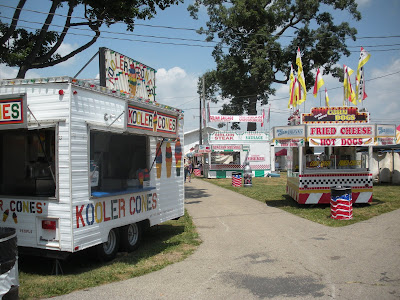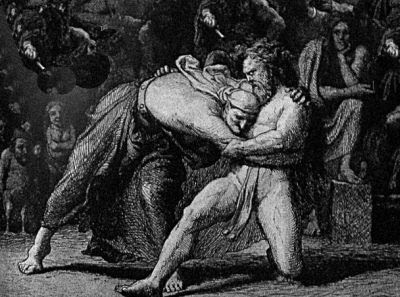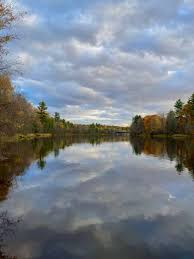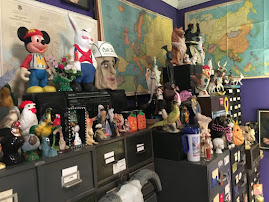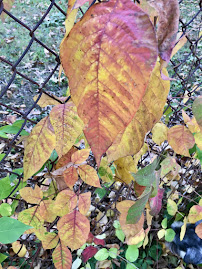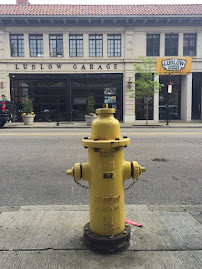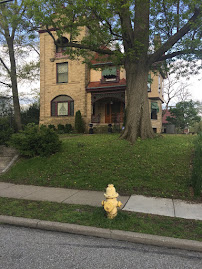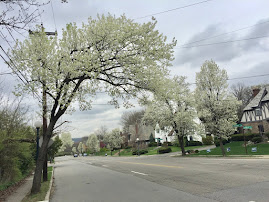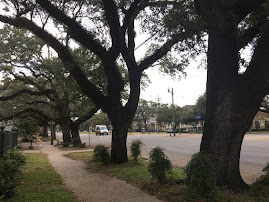
Dave and Mike heading home (VAL photo, circa 1950)
Dear George,
Growing up on the banks of the Menominee River shaped our childhoods and who we were to become. Our family moved there in 1946 when Riverside Boulevard was an empty two-lane gravel road. There were no electricity or phone lines, and we had the only house within a half-mile in either direction. Several neighbors built houses within the next few years, so it became less isolated, but, nonetheless, we were living pretty much by ourselves in a forest and water world.
Our house was upstream about three miles from the river’s mouth in downtown Menominee at Green Bay. The river was at its widest point where we lived, about two-tenths of a mile across, nearly identical to the Ohio River at Cincinnati. It offered scenic beauty in summer and winter and was the location of daily family activity, especially for us children. We all learned to swim like fish, and when we became eight or nine we’d challenge ourselves by doing the Australian crawl across the river to Pig Island, accompanied by my dad in a rowboat carrying life preservers. As teens we built log rafts which became more and more sophisticated over time, and our house became a major gathering place for our groups of friends. Propelled by a tiny 1.5 horsepower motor, we’d have endless adventures in our rowboat, crossing the river to Pig Island, heading east to the dam, or west to Indian Island and Mason Park.

Here’s a Google map which identifies some of the major spots on our section of the river. I’ll say a little bit about each of these.
1. Our house. My grandfather Guy Cramer built our house in 1941 as a summer cottage, picking what was probably the most scenic spot on the river in Menominee County. The house was made of Norway pine and featured a great fireplace built from stones collected in nearby fields. Steven, Peter, Vicki, and I grew up there and my parents lived in the house until the 1960’s. We all shed tears when they decided to sell it. Years later somebody cut the house in half and moved it to the Green Bay shore where we’ve stopped by occasionally to reminisce.
2. Our neighbors. A retired couple named the Orths lived on the property next door to us, and the Meads lived next door to the Orths, right on the lagoon. Dr. Mead was our family dentist, and Mrs. Mead was a grandmotherly lady who always had a cookie or a piece of pie available for kids who stopped at her door. She grew carrots in her garden, and I’d sneak over and pull one up, wipe the dirt off, and eat it straight out of the ground.
3. Mr. Shaver. Our neighbor to the west was Mr. Shaver, a middle-aged bachelor who wasn’t keen on children coming onto his property. He had an outhouse whose walls were papered with movie star photos, and, when my brother Steven locked me inside it, I climbed up the walls to exit through an open space near the ceiling, but ripped up many of the photos in the process. One night my parents heard loud sounds coming from Mr. Shaver’s, and, thinking burglars were breaking into the house, my parents called the sheriff. Mr. Shaver became pretty angry when the deputies surrounded the house since he’d been outside chopping firewood on a romantic rendevouz with his date.

Swimming at our house (VAL photo, circa 1953)
4. The Reeds. Lou Reed and his wife lived about three-quarters of a mile up the road. He was like a surrogate father to me. He gave me my first lessons in driving at age 14 and hired me to weed his strawberry garden, be his caddy at the golf course, and take care of their plants while they were out of town. On one such visit I locked myself into an attic storage space while exploring the house and had to break the door down to get out. The Reeds owned a wonderful Irish setter named Mike who ran away so many times to come to our house and play with the children that Lou Reed simply gave the dog to our family. Next door to the Reeds was an old, abandoned silo which contained many items of interest, e.g., tin cans, old bottles, horseshoes, chicken bones.
5. Indian Island. There was a small island up river from the Reeds that my father named Indian Island. We’d hook up the motor on our rowboat, my mother would pack a lunch, and our family would go on an outing there to have a picnic. Our Irish setter Mike would follow us the whole way, swimming for half a mile behind the boat. Fishermen kept their ice fishing shanties on Indian Island. The island had a steep sand bank on one side, and Steven and I would pretend that we were pirates burying our plunder.
6. Little River. Little River was a narrow waterway that ran off the Menominee and meandered up to Mason Park. It was very picturesque, lined with birch trees, and we liked to make boating sidetrips along its length.
7. Mason Park. Mason Park was a county park that offered primitive campsites, though nobody every monitored it and I rarely saw any other visitors there. By the time I reached my early teens Steve and I would camp there, often accompanied by other friends, e.g., Frankie S., Sammy W. We’d tie wagons to the backs of our bikes in order to pull our camping gear up Riverside Boulevard. At the far end of the park there was a swimming hole where somebody had strung up a tire on a rope which allowed us to swing out and do cannonballs into the water.
8. Pig Island. Pig Island was right across the river from our house and hence the site for hiking, camping, and all kinds of adventures. Named after the farmer’s pigs that my parents saw when we first moved to the river, it’s a sizeable island, about four-tenths by six-tenths of a mile. A family friend bought Pig Island in the late 1950’s and built a bridge, roadway, and A-frame house, but it was all unadulterated forest in our childhood and early adolescence.
9. The Channel. The Channel ran between Pig Island and the neighboring island, whose name I now forget. It was the most mysterious place on the river, hidden away, silent, home to water-lilies, dragonflies, blue heron, and water-logged stumps.
10. Brewery Park. Brewery Park, on the other side of the lagoon from the Mead’s house, was owned and “operated” for its employees by the M&M Brewery, home of Silver Cream beer. There was nothing there except a dirt road and a bare patch of land providing access to a swimming spot on the river. When I got to a certain age, I decided that I could climb one of the high trees in Brewery Park and watch female Brewery employees strip and change into their swimming suits behind their cars. I tried out my plan one Saturday afternoon, but, after hours in a tree in with nobody even arriving, I gave up on the idea.

Boating at dusk (VAL photo, circa 1949)
11. Logging Island. Menominee and Marinette were the biggest lumbering center in the world around the turn of the twentieth century, and some remnants still remained on the river. Most notably the loggers had built an artificial island with a log house in the center of the river as a base for their work. Every now and then we would boat over there with our parents and get out and explore. There were no artifacts left, but it still was like going back in history. When we were at home for Xmas vacation in the early 1960’s, vandals set the structure on fire, and we watched it burn with a sense of great loss.
12. The Dam. When we boated to the logging island, we always had fears of being caught up in the current, swept over the nearby dam, and dashed to pieces on the rocks below. Years later my brother Peter recalled that he and his friends used to go swimming at the dam, sliding over its edge and down its surface into the white water at the bottom. It appeared that our fears of death were exaggerated.
13. Riverside Cemetery. We could see Riverside Cemetery in the distance downriver from our house, and Steven and I used to ride our bikes through the cemetery on our way home from school. For years archeologists have explored the site for artifacts from the Menominee Indians who lived on the river’s shore. Vicki told me this summer that a team of archeologists had contacted her, asking permission to check our family property for Indian relics.
What strikes me, in retrospect, is how much we children got to explore our natural surroundings on our own. It was a safe, familiar world. Once we reached the age of eleven or twelve, we were free to explore the forest and the river, with minimal monitoring by parents. It was good training in independence and lots of fun too. Like Robin Hood’s Sherwood Forest, the river and its surroundings offered many opportunities for adventure.
Love,
Dave
G-Mail Comments
-Gayle C-L (7-17): Very nice. And Happy Birthday. ;)))). And many more. Lots of love. ;))))








